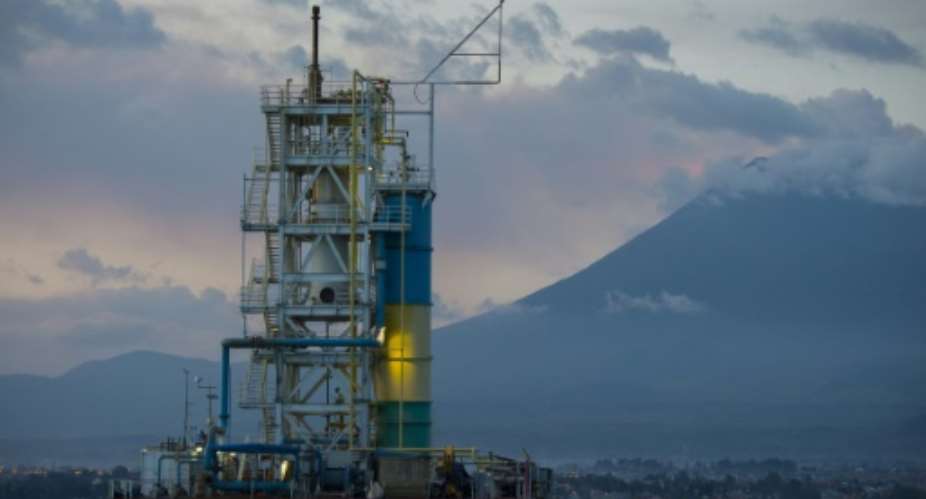Kigali (AFP) - Rwanda formally opened a unique methane power plant Monday with hopes that it will one day provide 60 percent of the country's electricity, according to its operator.
The generation station on Lake Kivu in Rwanda's west will also help reduce the risk of a potentially catastrophic natural disaster should the lake's vast quantities of methane and carbon dioxide be disturbed by an earthquake.
President Paul Kagame joined managers from the state-run Rwanda Energy Group (REG) for the opening ceremony of the $200 million (145 million euros) "KivuWatt" project, REG manager Augusta Mutoni told AFP.
US-based power company ContourGlobal started construction of the plant located in Kibuye, close to the border with the Democratic Republic of Congo, after the government ran a successful pilot that produced about two megawatts (MW) of electricity from the methane in the lake.
The Kibuye plant has produced 26 MW since December.
The pioneering new system uses a floating platform 13 kilometres (eight miles) off the shoreline that employs a vacuum to suck up methane from 300 metres below the waterline instead of using drilling as with traditional methane extraction projects.
Methane is then separated from water and carbon dioxide (Co2) and shipped to the shore via an underwater pipeline while excess CO2 is pumped back into the lake.
ContourGlobal hopes to build three more platforms at Kibuye by 2018 or 2019 which will increase the capacity of the "KivuWatt" project by 100 MW, a major boost to Rwanda's current nationwide production capacity of just 160 MW.
Lake Kivu, along with Cameroon's Lake Nyos and Lake Monoun, is one of three lakes in the world to have dangerously high concentrations of gasses like methane that if released suddenly could cause a disastrous explosion, after which waves of CO2 could suffocate people and livestock.
In 1984, an eruption killed 37 people around Lake Monoun, then in 1986 a similar disaster at Lake Nyos claimed more than 1,700 lives.
The "KivuWatt" scheme was largely financed by private capital, though some 45 percent of the funding came in the form of loans from international development institutions.





 There’s nothing you can do for us; just give us electricity to save our collapsi...
There’s nothing you can do for us; just give us electricity to save our collapsi...
 Ghanaian media failing in watchdog duties — Sulemana Braimah
Ghanaian media failing in watchdog duties — Sulemana Braimah
 On any scale, Mahama can't match Bawumia — NPP Youth Organiser
On any scale, Mahama can't match Bawumia — NPP Youth Organiser
 Never tag me as an NPP pastor; I'm 'pained' the 'Akyem Mafia' are still in charg...
Never tag me as an NPP pastor; I'm 'pained' the 'Akyem Mafia' are still in charg...
 Your refusal to dedicate a project to Atta Mills means you never loved him — Kok...
Your refusal to dedicate a project to Atta Mills means you never loved him — Kok...
 2024 elections: I'm competent, not just a dreamer; vote for me — Alan
2024 elections: I'm competent, not just a dreamer; vote for me — Alan
 2024 elections: Forget NPP, NDC; I've the Holy Spirit backing me and nothing wil...
2024 elections: Forget NPP, NDC; I've the Holy Spirit backing me and nothing wil...
 2024 elections: We've no trust in judiciary; we'll ensure ballots are well secur...
2024 elections: We've no trust in judiciary; we'll ensure ballots are well secur...
 Performance tracker: Fire MCEs, DCEs who document Mahama's projects; they're not...
Performance tracker: Fire MCEs, DCEs who document Mahama's projects; they're not...
 Train crash: Railway ministry shares footage of incident
Train crash: Railway ministry shares footage of incident
